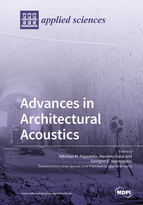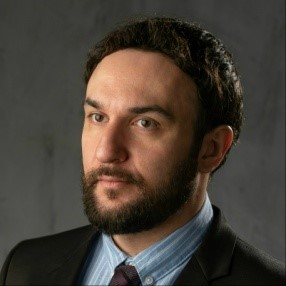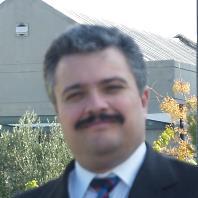Advances in Architectural Acoustics
A special issue of Applied Sciences (ISSN 2076-3417). This special issue belongs to the section "Acoustics and Vibrations".
Deadline for manuscript submissions: closed (30 June 2021) | Viewed by 55434
Special Issue Editors
Interests: architectural acoustics; computational acoustics; acoustic measurements; acoustic sources; finite element method; impulse response; acoustic parameters; sound quality; psychoacoustics; soundscape
Special Issues, Collections and Topics in MDPI journals
Interests: environmental acoustics; environmental sustainability; metamaterials; architectural acoustics; building acoustics; digital signal processing; machine learning
Special Issues, Collections and Topics in MDPI journals
Interests: computational mechanics; optimal design and parameter identification; applied artificial intelligence
Special Issues, Collections and Topics in MDPI journals
Special Issue Information
Dear Colleagues,
Satisfactory acoustics is crucial for the ability of spaces such as auditoriums and lecture rooms to perform their primary function. The acoustics of dwellings and offices greatly affects the quality of our life, since we are all consciously or subconsciously aware of the sounds to which we are daily subjected. Architectural acoustics, which encompasses room and building acoustics, is the scientific field that deals with these topics and can be defined as the study of generation, propagation, and effects of sound in enclosures. Modeling techniques, as well as related acoustic theories for accurately calculating the sound field, have been the center of many major new developments. In addition, the image conveyed by a purely physical description of sound would be incomplete without regarding human perception; hence, the interrelation between objective stimuli and subjective sensations is a field of important investigations.
A holistic approach in terms of research and practice is the optimum way for solving the perplexing problems which arise in the design or refurbishment of spaces, since current trends in contemporary architecture, such as transparency, openness, and preference for bare sound-reflecting surfaces are continuing pushing the very limits of functional acoustics. The aim of this Special Issue is to gather advances in architectural acoustics, which we hope could inspire researchers and acousticians to explore new directions in this age of scientific convergence. In the Special Issue, we welcome both original research papers and review articles based on diverse topics, with architectural acoustics as a reference point, such as:
- Computational acoustics;
- Auralization;
- Acoustic measurements;
- Sound sources;
- Sound absorbers and diffusers;
- Acoustic comfort, annoyance;
- Intelligibility of speech in rooms;
- Design of concert or conference halls;
- Historical halls acoustics;
- Worship spaces acoustics.
Scientists working in this broad field are invited to present their work.
Dr. Nikolaos M. Papadakis
Prof. Dr. Massimo Garai
Prof. Dr. Georgios E. Stavroulakis
Guest Editors
Manuscript Submission Information
Manuscripts should be submitted online at www.mdpi.com by registering and logging in to this website. Once you are registered, click here to go to the submission form. Manuscripts can be submitted until the deadline. All submissions that pass pre-check are peer-reviewed. Accepted papers will be published continuously in the journal (as soon as accepted) and will be listed together on the special issue website. Research articles, review articles as well as short communications are invited. For planned papers, a title and short abstract (about 100 words) can be sent to the Editorial Office for announcement on this website.
Submitted manuscripts should not have been published previously, nor be under consideration for publication elsewhere (except conference proceedings papers). All manuscripts are thoroughly refereed through a single-blind peer-review process. A guide for authors and other relevant information for submission of manuscripts is available on the Instructions for Authors page. Applied Sciences is an international peer-reviewed open access semimonthly journal published by MDPI.
Please visit the Instructions for Authors page before submitting a manuscript. The Article Processing Charge (APC) for publication in this open access journal is 2400 CHF (Swiss Francs). Submitted papers should be well formatted and use good English. Authors may use MDPI's English editing service prior to publication or during author revisions.








